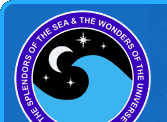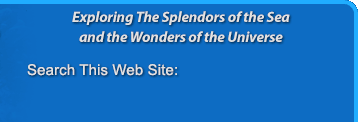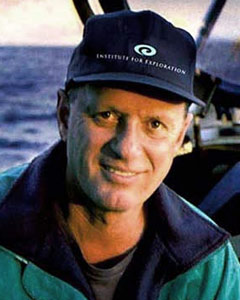
Robert Ballard
1942 - Present
American oceanographer, explorer, geologist and underwater archaeologist.
Noted for his work in underwater archaeology and archaeology of shipwrecks.
Discovered the famous wreck of the RMS Titanic in 1985.
Robert Ballard is an American oceanographer, explorer, geologist, and underwater archaeologist. He was born on June 30, 1942 in Wichita, Kansas. His family soon moved to San Diego, California. He developed an early interest in the Sea when he read the novel Twenty Thousand Leagues Under the Sea. Growing up in San Diego, the ocean was always nearby. Ballard developed an interest in underwater exploration and closely followed expeditions such as those of the bathyscaphe Trieste. In 1962 his father helped him to get a part-time job with the Ocean Systems Group at North American Aviation. He helped the company work on a proposal to build a three-man deep-sea submersible. During this time he attended the University of California in Santa Barbara. He earned degrees in chemistry and geology in 1965. While attending college, he completed the U.S. Army's ROTC program, which gave him an Army officer's commission in Army Intelligence. In 1966 he received his Master's degree in geophysics from the University of Hawaii's Institute of Geophysics. After graduating, he got married and returned to work at North American Aviation.
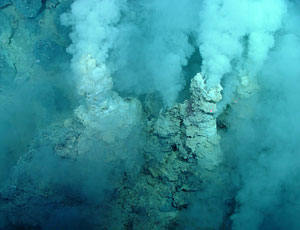
(black smokers) on the ocean floor
In 1967 Ballard was called to active duty by the U.S. Army during the Vietnam War. He requested a transfer to the Navy to make better use of his training as a marine geologist. He was assigned to the Woods Hole Oceanographic Research Institution in Massachusetts where he worked on underwater submersibles and helped to develop the now-famous Alvin. He also worked as a liaison between Woods Hole and the Office of Naval Research. After leaving the Navy, he returned to Woods Hole as a research fellow. He worked to persuade organizations to help fund research using the new deep-sea submersible, Alvin. In 1974 Ballard received his Ph. D. in geology and geophysics from the University of Rhode Island. He then went to work at Woods Hole as a full-time marine scientist. His first dive was in the submersible Ben Franklin off the coast of Florida for a Woods Hole expedition. In 1975 Ballard participated in an expedition to explore the Mid-Atlantic Ridge, diving as deep as 9,000 feet (2,750 meters). In 1979 he was part of an expedition that discovered active hydrothermal vents near the Galapagos Islands. Ballard and his crewmates were among the first to observe the "black smokers", underwater volcanoes that spewed dark, chemical-rich, boiling water. They were amazed to find abundant plant and animal life growing around these vents where the water was hot enough to melt lead. They had discovered an entirely new type of ecosystem. Instead of sunlight, these organisms depended on the chemicals from the vents to make food. This process came to be known as chemosynthesis.
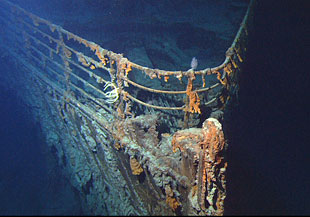
Ballard soon developed an interest in marine archaeology. In 1980 he helped to develop small, unmanned submersibles that could be controlled by a tether from a surface ship. They created Argo, a robotic sub that could transmit live video and could be controlled remotely. Ballard was approached by the U.S. Navy to help search for two sunken submarines, the USS Scorpion and the USS Thresher. After the successful completion of these missions, he soon set his sights on the Holy Grail of underwater archaeology, the wreck of the Titanic. On August 22, 1985 the U.S. Navy research ship Knorr arrived at the last known site of the Titanic. Argo was deployed to search for the wreck. On September 1, 1985, Argo spotted debris on the ocean floor. Next, a boiler was discovered. Soon after that, the hull of the mighty ocean liner appeared out of the darkness. Ballard's team searched the ship's exterior and found that it had split in two. Ballard considered the wreck to be a cemetery and refused to remove any artifacts from the site. A year later, he and his team returned to do a more detailed study of the ship. This time Ballard was able to personally inspect the site using Alvin. The discovery of Titanic planted Ballard firmly in the pages of history and made him an instant celebrity. During later expeditions, he discovered other famous shipwrecks including the German battleship Bismarck and the passenger liner Lusitania. He also located the wrecks of John F. Kennedy's PT-109, and the Yorktown, which was sunk in the Battle of Midway. In 1989 Ballard established the JASON project, an education program designed to allow students to follow underwater expeditions. To date, Ballard has conducted more than 120 undersea expeditions and has helped to pioneer the use of submarine technology and the science of underwater archaeology. He has received a number of awards and honors, including the Lindbergh Award, the Explorers Medal, and the Hubbard Medal. He is currently the President of the Institute of Exploration in Mystic Connecticut, Scientist Emeritus at Woods Hole Oceanographic Institution, and Director of the Institution for Archaeological Oceanography at the University of Rhode Island.
